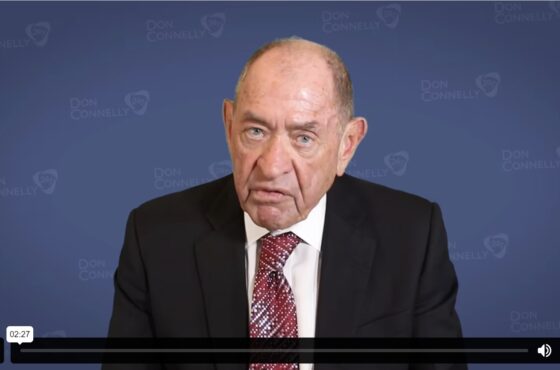Deal with Objections Before They Become Mindsets
 Most salespeople in any industry quickly become proficient at handling objections after the client or prospect brings them up. And that’s a good skill to have. But if you’re constantly dealing with the same objections at the end of your initial presentation, you’re already at a disadvantage – and very likely you’ve lost the chance to win the client.
Most salespeople in any industry quickly become proficient at handling objections after the client or prospect brings them up. And that’s a good skill to have. But if you’re constantly dealing with the same objections at the end of your initial presentation, you’re already at a disadvantage – and very likely you’ve lost the chance to win the client.
If you’ve gone for the close and asked for the order, and the prospective client is still raising objections, the battle is on. It’s a signal that the prospect’s mental shields are up. In fact, you may not even be seriously in the fight anymore. This is the case when the objection the person is giving you is not the real objection.
Stated vs. Unstated Objections
Broadly speaking, there are two kinds of objections: The ones people tell you about, and the ones they don’t. That is, stated and unstated objections.
The stated objections are the easy ones. The unstated objections? Those are doozies.
See, if you’re trying to diffuse a price/budget objection, or the “I need to check with my spouse/business partner/rich uncle” objection at the appointment, it’s often already too late to deal with the objections. The real objection is something they can’t say:
- I don’t trust you.
- I don’t trust your company.
- I don’t trust Wall Street.
- I’m going to do business with my nephew.
As Sun Tzu wrote, “To win without fighting is the acme of skill.”
If you’re in the objection stage of the sales process, and you get stuck there for more than one or two objections, it’s usually a sign that you’ve missed something: The client isn’t “in the mood,” as they say.
And if the client isn’t in the mood to do business yet, it really doesn’t matter how well you answer their stated objections. You need to change their mindset.
You have to move the prospective client from their current mindset of skepticism, suspicion or even annoyance to a mindset of openness, eagerness and excitement.
But even then, you’re behind the eight ball. Because it’s very difficult to try to move someone out of a mindset they’re already in.
You have not yet mastered the art of winning without fighting.
The better path isn’t to try to change a suspicious or skeptical mindset. The better path is to diffuse it from the outset.
Change your paradigm for objections.
Don’t passively wait for your prospect to do the mental work to come up with them. When they do, their mental shields go up.
Instead, be proactive, and anticipate the objections well ahead of time – and gently lay them down as you go through your presentation and show them your value.
You already know 90% of the objections you’re likely to handle in the field. You could write the top five or ten down on a napkin.
You probably also know the top five unstated objections you’re likely to be dealing with as well.
So, address them up front – before the prospect has to do the mental work of coming up with them.
Here’s a valuable tip: Most of you have been taught objection handling in terms of “overcoming” them. But that’s often the wrong way of looking at objections, because it still leads to a mindset of conflict. You can win the argument a hundred times over – and still not gain the client.
Instead of trying to overcome objections, I want you to think of dissolving or neutralizing them.
Activating the right side of the brain
For most people, the left side of the brain is associated with logic, reason and analytical processes. The right side of the brain is associated with emotion, excitement, and imagination.
If you are mired in objections at the close of your interview, chances are it’s because you haven’t activated the prospect’s right brain.
It’s the left brain that usually generates objections – at least the ones beyond “I don’t like this guy,” which is a tough one to overcome. And it’s the left brain that generally operates the mental shields of skepticism and suspicion.
If you can engage the right brain – the one associated with imagination – then the left brain will find a way to reason its way to what the right brain wants.
One way to engage the prospect’s right brain and diffuse the left brain is this:
Don’t ask the question “what do you think about what we’ve discussed so far?”
Instead, ask the question, “how do you feel about what we’ve discussed so far?”
If you have the right brain on your side, you’ll get a positive answer. If you don’t get a positive answer, you know you aren’t ready to close yet. But you also avoid engaging the left brain at this point. If the right-brain still hasn’t opened the door, then the left brain is prone to lock it shut against you.
Get the right brain on your side. THEN engage the left brain.
This is how to influence the prospect’s mindset.
Handling the price/fee objection
One common example: The price objection. If you get to the end of the initial presentation, and they’re still objecting to price – be it your fees or commissions or whatever – it really means you failed to show value for the price.
If you take price into account, and you show value even after your fees, you not only eliminate a major obstacle to the close – you also go a long way to preventing the prospect from activating their mental shields.
Adopt a multi-layered approach
You don’t have to wait for the sales appointment to begin the process. In fact, the process can begin with your branding, and with the language on your website.
For example, during the 2008-2009 financial crisis, New York Life – a mutually-owned life insurance company with a number of safe money products – sought to diffuse the public’s suspicion of the financial industry at large by branding themselves as “Main Street, not Wall Street.”
This set their agents up for a productive conversation about the fact that as a mutual company, they are collectively owned by their shareholders, and not by shareholders on Wall Street.
It was a difficult sales environment for everybody at that time. But by anticipating the objection, New York Life was able to get a major sales obstacle out of the way, and at the same time set its agents up on a favorable basis to discuss the things that set New York Life apart from broker dealers and other companies competing for assets: Mutual ownership, and safety of capital.
Another layer of anticipation can come from the copy on your website. Most investors are doing at least some research online before they talk to a financial professional – and chances are very good they’ve already visited yours before they come to meet with you.
To put a finer point on it – if your website and other marketing material don’t address their real concerns ahead of time, they may not even contact you at all, and you’d never know it.
You have several chances to neutralize likely objections on your website:
- Your blog;
- Your frequently-asked questions (FAQ) list;
- A video on your homepage or on YouTube;
- Podcasts;
- Prerecorded online seminars and webinars;
You can also do the same thing with PowerPoint classes, seminars, lunch and learns – however and wherever you engage your prospective and current clients. Constantly be on the lookout for ways to neutralize common objections before the client gets a chance to raise them.
That way, you can win without fighting.
Handling objections is a common issue for Advisors who are just starting their careers in our business. If that’s you, we just released a 24-step training course to help you kick-start your practice – overcoming objections is one of the steps.
Watch this 4-minute video to learn what’s in this course and how it would help you beat the 80% failure rate in our industry.
Enroll in this training course now for $149!
Click here to learn more about the training course “Become Brilliant at the Basics: What They Don’t Teach You in Training”.



